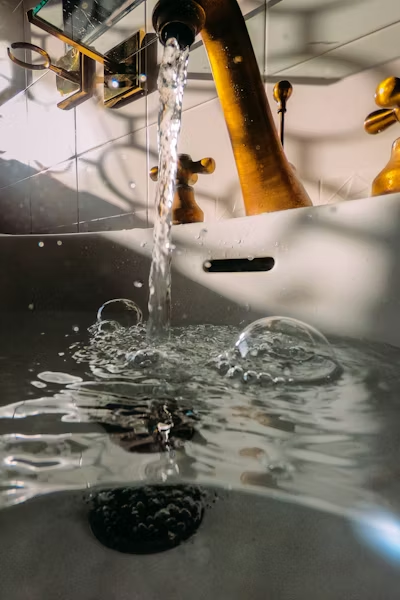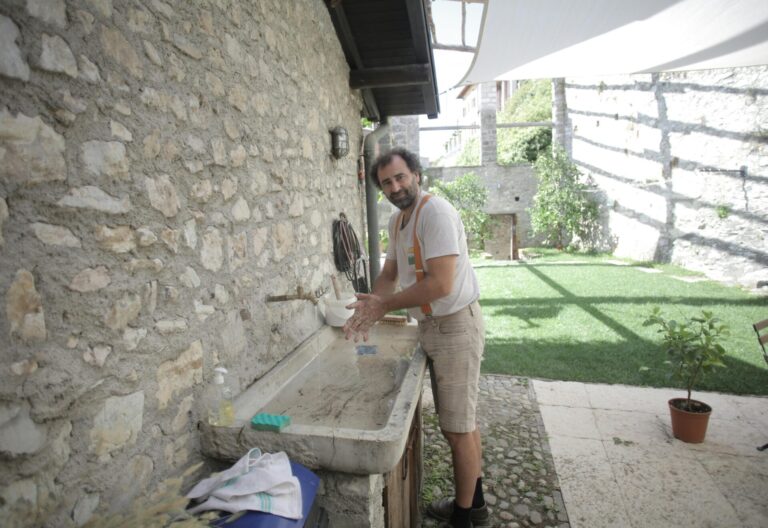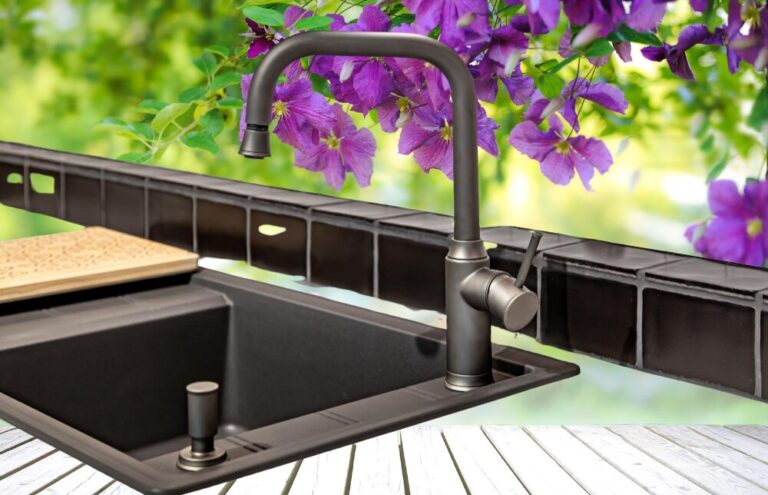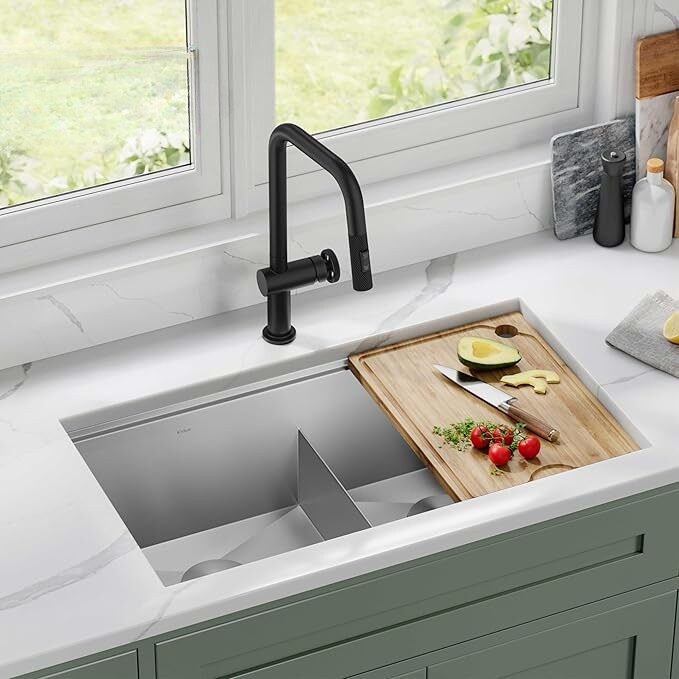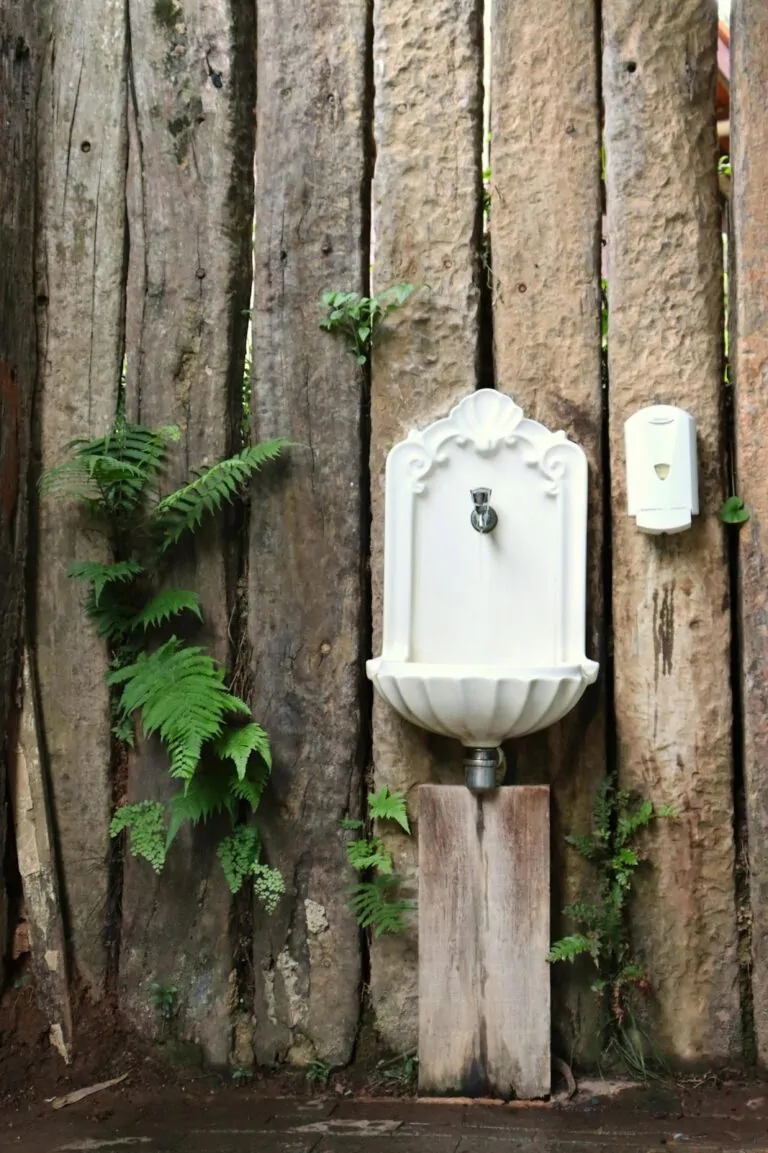How to Drain an Outdoor Sink in 5 Easy Steps
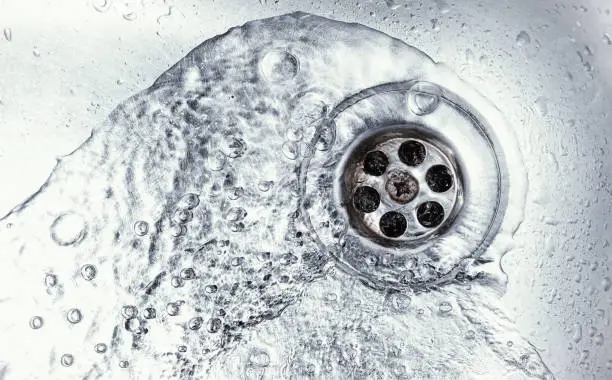
There’s nothing worse than an outdoor sink that doesn’t drain properly, leaving you with standing water, slow drainage, or even messy backups. Whether you’re setting up a new outdoor washing station or fixing an existing one, knowing how to drain an outdoor sink correctly is key to keeping it functional and hassle-free.
Keeping your outdoor sink in good shape is important. It helps it last longer and work better. Good sink maintenance means it won’t have problems with outdoor sink drainage.
A well-kept outdoor sink is not just handy. It’s also good for your plumbing. If it gets clogged or drains poorly, it can cause bigger issues. These can include water damage and expensive plumbing repairs. An article, How to Keep Your Outdoor Sink Clog-Free, can also help you in draining an outdoor sink
From gravity-fed systems to simple hose setups, you’ll learn the right way to direct water away from your sink, keeping your patio, garden, or outdoor kitchen clean and dry. Let’s dive in!
Understanding Outdoor Sink Drainage Systems
Outdoor sinks are a convenient addition to gardens, patios, and utility areas, providing easy access to water for cleaning, gardening, or food preparation. However, proper drainage is essential to prevent water accumulation, odors, and potential damage to surrounding structures. Understanding how outdoor sink drainage systems work can help you choose the right setup for your needs.
Types of Outdoor Sink Drainage Options
Depending on the intended purpose, local laws, and environmental concerns, there are several methods for draining an outdoor sink.
1. Direct Ground Drainage
- The simplest method involves allowing water to drain directly into the ground beneath the sink.
- Best suited for gravel or permeable surfaces where water can disperse naturally.
- Not ideal for clay soils or areas with poor absorption, as it can lead to pooling.
2. Dry Well System
- A buried chamber filled with gravel or rocks collects and slowly disperses water into the surrounding soil.
- Prevents flooding and is more efficient than direct ground drainage.
- Requires periodic maintenance to avoid clogging from debris.
3. Connected to a Storm Drain or Sewer Line
- For permanent outdoor sinks, connecting to a municipal storm drain or sewer system ensures efficient drainage.
- May require permits and professional installation to comply with local regulations.
4. Greywater Recycling System
- Redirects used water (greywater) to irrigate plants or lawns.
- Environmentally friendly but requires filtration to avoid clogging or contamination.
Key Considerations for Installation
- Local Regulations – Check municipal codes regarding outdoor drainage to avoid fines.
- Slope and Positioning – Ensure the sink and drainage pipes have a slight downward slope to facilitate water flow.
- Debris Management – Use a strainer or filter to prevent leaves and food particles from clogging the drain.
- Freeze Protection – In colder climates, opt for frost-proof drains or shut off the water supply in winter to prevent pipe damage.
Common Drainage Challenges for Outdoor Sinks
Outdoor sinks are highly practical, but their drainage systems can face several challenges due to environmental factors, improper installation, and lack of maintenance. Addressing these issues early can prevent costly repairs and ensure long-term functionality. Below are some of the most common drainage problems and how to mitigate them.
1. Clogging from Debris
Outdoor sinks are prone to collecting leaves, dirt, food scraps, and other debris, which can block the drain over time.
Solution:
- Install a fine mesh strainer to catch large particles.
- Regularly clean the drain to prevent buildup.
- Avoid pouring grease or large food remnants down the sink.
2. Poor Water Drainage Due to Improper Slope
If the sink or drainage pipe is not angled correctly, water may pool instead of flowing away efficiently.
Solution:
- Ensure the drainpipe has a downward slope (at least 1/4 inch per foot).
- Use a level during installation to confirm proper alignment.
- Adjust or reposition the sink if water stagnates.
3. Freezing and Pipe Damage in Cold Climates
In winter, trapped water in pipes can freeze, leading to cracks or bursts.
Solution
- Use frost-proof outdoor sinks or insulated pipes.
- Install a shutoff valve and drain the system before freezing temperatures arrive.
- Consider a heated drain line if the sink is used year-round.
4. Soil Saturation and Flooding
If the drainage system (like a dry well) is overwhelmed or the soil doesn’t absorb water well, flooding can occur around the sink area.
Solution
- Improve drainage with a deeper dry well or French drain system.
- Redirect water to a storm drain if local regulations permit.
- Avoid placing the sink in low-lying areas where water collects.
5. Odours from Stagnant Water or Bacteria
Standing water or organic buildup can cause unpleasant smells and attract pests.
Solution
- Flush the drain with a vinegar and baking soda solution to break down residue.
- Ensure proper ventilation in enclosed sink areas.
- Use enzymatic drain cleaners to prevent bacterial growth.
6. Backflow from Heavy Rain or Sewer Issues
During heavy rainfall, sewer lines or dry wells can back up, causing water to flow back into the sink.
Solution
- Install a backwater valve to prevent reverse flow.
- Elevate the drain outlet if connected to a sewer line.
- Ensure the drainage system has sufficient capacity for heavy rain.
Tools and Materials Needed for Draining an Outdoor Sink
Draining your outdoor sink needs more than just knowing how. You also need the right DIY drainage equipment. Having the correct drainage tools and plumbing materials makes the job easier and faster.
Essential Tools for the Job
First, you’ll need some basic tools found in most DIY kits. These include:
- Adjustable pliers for gripping various sizes of pipes and fittings
- A pipe wrench for tightening and loosening pipes
- A drain snake or auger for clearing clogs deep within the drainage system
- Teflon tape for creating watertight seals on threaded pipe connections
These essential tools will help you tackle most drainage tasks associated with your outdoor sink..
How to Drain an Outdoor Sink: Step-by-Step Guide
Proper drainage is essential for keeping your outdoor sink functional and preventing water buildup, odors, and pipe damage. Whether you’re installing a new sink or troubleshooting an existing one, this step-by-step guide will help you ensure efficient drainage.
Step 1: Choose the Right Drainage System
Before installation, decide which drainage method works best for your setup:
- Direct Ground Drainage – Simple but best for permeable surfaces.
- Dry Well System – Ideal for slow-absorbing soils.
- Storm Drain/Sewer Connection – Requires professional installation.
- Greywater System – Eco-friendly for garden irrigation.
Step 2: Install the Drain Pipe with Proper Slope
- Use a PVC or flexible drain pipe (1.5–2 inches in diameter).
- Ensure a minimum slope of 1/4 inch per foot to promote water flow.
- Secure connections with waterproof sealant to prevent leaks.
Step 3: Prevent Clogs with a Strainer
- Place a fine mesh strainer over the drain to catch debris.
- Clean it regularly to maintain optimal water flow.
Step 4: Test the Drainage System
- Run water through the sink to check for proper flow.
- Look for pooling water or slow drainage, which may indicate a slope issue or clog.
Step 5: Maintain Your Outdoor Sink Drain
- Monthly: Flush with hot water or a vinegar/baking soda mix to prevent buildup.
- Seasonally: Inspect pipes for cracks, leaks, or freezing damage.
- Annually: Clear out the dry well (if applicable) to avoid sediment buildup.
Connecting Your Outdoor Sink to the Main Sewer Line
Connecting your outdoor sink to the main sewer line is key for good drainage and avoiding backups. You’ll need to get the right permits, choose between doing it yourself or hiring a pro, and follow a guide for the steps.
Permits and Regulations to Consider
Before you start, learn about local plumbing rules. Getting the right permits is important to avoid fines and follow the law. Talk to your local government or a plumber to find out what you need.
- Check local plumbing codes and regulations
- Obtain necessary permits before commencing work
- Consult with local authorities or a professional plumber
Troubleshooting Common Outdoor Sink Drainage Problems
Outdoor sinks can face issues like clogs, slow drainage, and leaks. These problems can come from debris, wrong installation, or wear and tear. Knowing how to fix these can make a big difference.
Dealing with Clogs and Blockages
Clogs in outdoor sink drains often happen because of dirt, leaves, or grease. To fix a clog, try using a plunger or drain snake first. For tough clogs, you might need a chemical cleaner or baking soda and vinegar.
Addressing Slow Drainage Issues
Slow drainage might mean there’s a partial clog or a problem with the sink’s setup. Look for kinks or blockages in the drainpipes. Make sure the sink is vented correctly. A drain screen can also help catch debris.
Fixing Leaks and Broken Connections
Leaks around outdoor sinks can cause water damage and waste. Check the connections between the sink and pipes for leaks. Tightening loose parts or replacing old gaskets can fix it. Winterising your outdoor sink to prevent freezing is also key; drain the pipes and insulate exposed ones to avoid freezing.
By tackling these common problems, your outdoor sink will work better. Regular checks for clogs and inspecting connections can stop bigger issues before they start.
Conclusion
Having the right outdoor sink drainage is key for a clean and useful outdoor area. It’s important to know about the different drainage systems and what they need. This helps keep your sink working well.
By following the steps in this article, you can make sure your outdoor sink drains properly. This helps avoid plumbing problems and protects the environment. Using green drainage methods like greywater systems or rainwater collection makes your space more eco-friendly.
Keeping up with sink maintenance and plumbing checks is vital. It helps catch problems early. By being proactive with outdoor sink drainage, you can have a great outdoor space. Plus, you’ll be kinder to the planet.

